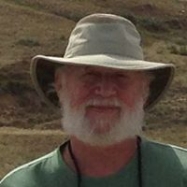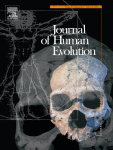 Professor Emeritus Robert A. Martin is this week’s #RacerScholar. He co-authored the paper, “Chronology for the Cueva Victoria fossil site (SE Spain): Evidence for Early Pleistocene Afro-Iberian dispersals,” which is in the January 2016 edition of the Journal of Human Evolution.
Professor Emeritus Robert A. Martin is this week’s #RacerScholar. He co-authored the paper, “Chronology for the Cueva Victoria fossil site (SE Spain): Evidence for Early Pleistocene Afro-Iberian dispersals,” which is in the January 2016 edition of the Journal of Human Evolution.
Abstract
Cueva Victoria has provided remains of more than 90 species of fossil vertebrates, including a hominin phalanx, and the only specimens of the African cercopithecid Theropithecus oswaldi in Europe. To constrain the age of the vertebrate remains we used paleomagnetism, vertebrate biostratigraphy and Th-230/U dating. Normal polarity was identified in the non-fossiliferous lowest and highest stratigraphic units (red clay and capping flowstones) while reverse polarity was found in the intermediate strati graphic unit (fossiliferous breccia). A lower polarity change occurred during the deposition of the decalcification clay, when the cave was closed and karstification was active. A second polarity change occurred during the capping flowstone formation, when the upper galleries were filled with breccia. The mammal association indicates a post-Jaramillo age, which allows us to correlate this upper reversal with the Brunhes-Matuyama boundary (0.78 Ma). Consequently, the lower reversal (N-R) is interpreted as the end of the Jaramillo magnetochron (0.99 Ma). These ages bracket the age of the fossiliferous breccia between 0.99 and 0.78 Ma, suggesting that the capping flowstone was formed during the wet Marine Isotopic Stage 19, which includes the Brunhes-Matuyama boundary. Fossil remains of Theropithecus have been only found in situ similar to 1 m below the B/M boundary, which allows us to place the arrival of Theropithecus to Cueva Victoria at similar to 0.9-0.85 Ma. The fauna of Cueva Victoria lived during a period of important climatic change, known as the Early-Middle Pleistocene Climatic Transition. The occurrence of the oldest European Acheulean tools at the contemporaneous nearby site of Cueva Negra suggest an African dispersal into SE Iberia through the Strait of Gibraltar during MIS 22, when sea-level was 100 m below its present position, allowing the passage into Europe of, at least, Theropithecus and Homo bearing Acheulean technology. (C) 2015 Elsevier Ltd. All rights reserved.

Chronology for the Cueva Victoria fossil site (SE Spain): Evidence for Early Pleistocene Afro-Iberian dispersals
By: Gary R. Scott, Denis Scholz, Alexander Budsky, Carles Ferràndez, Francesc Ribot, Robert A. Martin, María Leríah
Journal of Human Evolution : JAN 2016, vol. 90, pgs. 183-197
DOI: 10.1016/j.jhevol.2015.08.002